您好,登录后才能下订单哦!
小编给大家分享一下Spring Boot + thymeleaf如何实现文件上传下载功能,相信大部分人都还不怎么了解,因此分享这篇文章给大家参考一下,希望大家阅读完这篇文章后大有收获,下面让我们一起去了解一下吧!
最近同事问我有没有有关于技术的电子书,我打开电脑上的小书库,但是邮件发给他太大了,公司又禁止用文件夹共享,于是花半天时间写了个小的文件上传程序,部署在自己的Linux机器上。
提供功能: 1 .文件上传 2.文件列表展示以及下载
原有的上传那块很丑,写了点js代码优化了下,最后界面显示如下图:
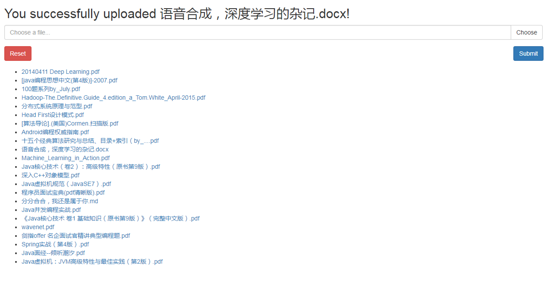
先给出成果,下面就一步步演示怎么实现。
1.新建项目
首先当然是新建一个spring-boot工程,你可以选择在网站初始化一个项目或者使用IDE的Spring Initialier功能,都可以新建一个项目。这里我从IDEA新建项目:
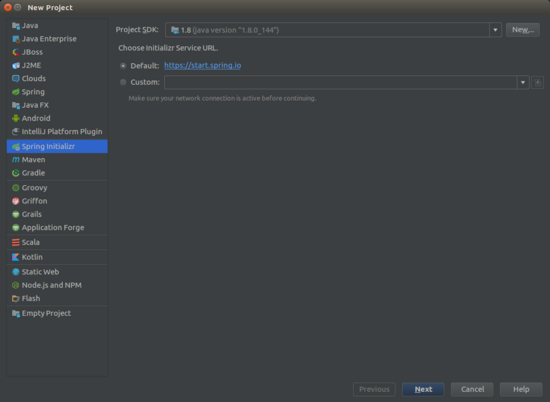
下一步,然后输入group和artifact,继续点击next:
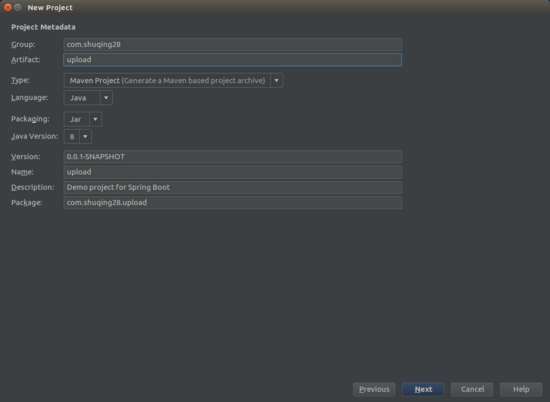
这时候出现这个模块选择界面,点击web选项,勾上Web,证明这是一个webapp,再点击Template Engines选择前端的模板引擎,我们选择Thymleaf,spring-boot官方也推荐使用这个模板来替代jsp。
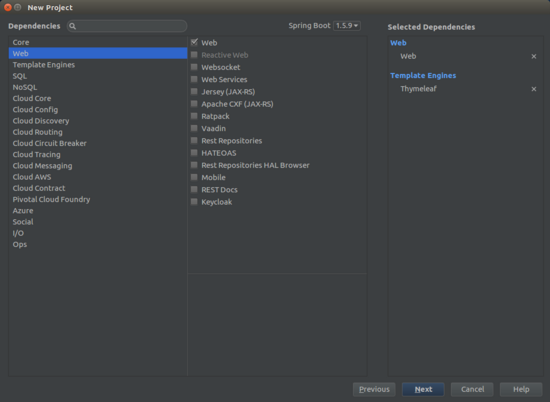
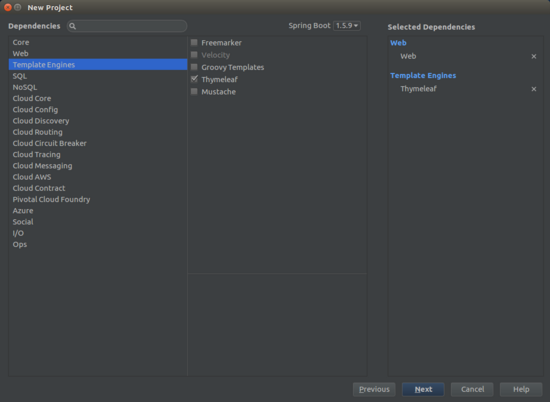
最后一步,然后等待项目初始化成功。
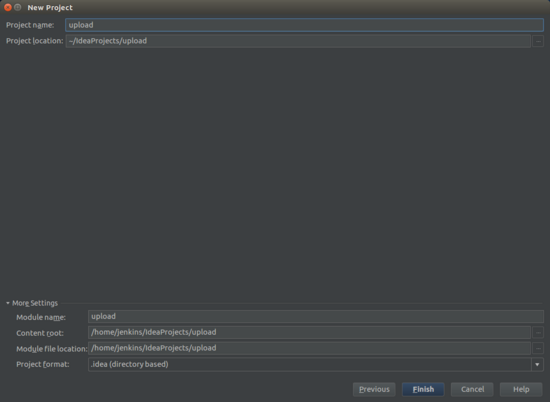
2.pom设置
首先检查项目需要添加哪些依赖,直接贴出我的pom文件:
<?xml version="1.0" encoding="UTF-8"?> <project xmlns="http://maven.apache.org/POM/4.0.0" xmlns:xsi="http://www.w3.org/2001/XMLSchema-instance" xsi:schemaLocation="http://maven.apache.org/POM/4.0.0 http://maven.apache.org/xsd/maven-4.0.0.xsd"> <modelVersion>4.0.0</modelVersion> <groupId>com.shuqing28</groupId> <artifactId>upload</artifactId> <version>0.0.1-SNAPSHOT</version> <packaging>jar</packaging> <name>upload</name> <description>Demo project for Spring Boot</description> <parent> <groupId>org.springframework.boot</groupId> <artifactId>spring-boot-starter-parent</artifactId> <version>1.5.9.RELEASE</version> <relativePath/> <!-- lookup parent from repository --> </parent> <properties> <project.build.sourceEncoding>UTF-8</project.build.sourceEncoding> <project.reporting.outputEncoding>UTF-8</project.reporting.outputEncoding> <java.version>1.8</java.version> </properties> <dependencies> <dependency> <groupId>org.springframework.boot</groupId> <artifactId>spring-boot-starter</artifactId> </dependency> <dependency> <groupId>org.springframework.boot</groupId> <artifactId>spring-boot-starter-thymeleaf</artifactId> </dependency> <dependency> <groupId>org.springframework.boot</groupId> <artifactId>spring-boot-configuration-processor</artifactId> <optional>true</optional> </dependency> <dependency> <groupId>org.springframework.boot</groupId> <artifactId>spring-boot-starter-test</artifactId> <scope>test</scope> </dependency> <!-- https://mvnrepository.com/artifact/org.webjars/bootstrap --> <dependency> <groupId>org.webjars</groupId> <artifactId>bootstrap</artifactId> <version>3.3.5</version> </dependency> <!-- https://mvnrepository.com/artifact/org.webjars.bower/jquery --> <dependency> <groupId>org.webjars.bower</groupId> <artifactId>jquery</artifactId> <version>2.2.4</version> </dependency> </dependencies> <build> <plugins> <plugin> <groupId>org.springframework.boot</groupId> <artifactId>spring-boot-maven-plugin</artifactId> </plugin> </plugins> </build> </project>
可以查看到 spring-boot-starter-thymeleaf 包含了webapp,最后两个webjars整合了bootstrap和jquery,其它的等代码里用到再说。
最后一个Spring boot maven plugin是系统创建时就添加的,它有以下好处:
1 . 它能够打包classpath下的所有jar,构建成一个可执行的“über-jar”,方便用户转移服务
2 . 自动搜索 public static void main() 方法并且标记为可执行类
3 . 根据spring-boot版本,提供内建的依赖解释。
3. 上传文件控制器
如果你只是使用SpringMVC上传文件,是需要配置一个 MultipartResolver 的bean的,或者在 web.xml 里配置一个 <multipart-config> ,不过借助于spring-boot的自动配置,你什么都不必做。直接写控制器类,我们在 src/main/java 下新建controller的package,并且新建FileUploadController:
package com.shuqing28.upload.controller;
import com.shuqing28.uploadfiles.pojo.Linker;
import com.shuqing28.uploadfiles.exceptions.StorageFileNotFoundException;
import com.shuqing28.uploadfiles.service.StorageService;
import org.springframework.beans.factory.annotation.Autowired;
import org.springframework.core.io.Resource;
import org.springframework.http.HttpHeaders;
import org.springframework.http.ResponseEntity;
import org.springframework.stereotype.Controller;
import org.springframework.ui.Model;
import org.springframework.web.bind.annotation.*;
import org.springframework.web.multipart.MultipartFile;
import org.springframework.web.servlet.mvc.method.annotation.MvcUriComponentsBuilder;
import org.springframework.web.servlet.mvc.support.RedirectAttributes;
import java.io.IOException;
import java.util.List;
import java.util.stream.Collectors;
@Controller
public class FileUploadController {
private final StorageService storageService;
@Autowired
public FileUploadController(StorageService storageService) {
this.storageService = storageService;
}
@GetMapping("/")
public String listUploadedFiles(Model model)throws IOException {
List<Linker> linkers = storageService.loadAll().map(
path -> new Linker(MvcUriComponentsBuilder.fromMethodName(FileUploadController.class,
"serveFile", path.getFileName().toString()).build().toString(),
path.getFileName().toString())
).collect(Collectors.toList());
model.addAttribute("linkers", linkers);
return "uploadForm";
}
@GetMapping("/files/{filename:.+}")
@ResponseBody
public ResponseEntity<Resource> serveFile(@PathVariable String filename) {
Resource file = storageService.loadAsResource(filename);
return ResponseEntity.ok().header(HttpHeaders.CONTENT_DISPOSITION,
"attachment; filename=\"" + file.getFilename() + "\"").body(file);
}
@PostMapping("/")
public String handleFileUpload(@RequestParam("file") MultipartFile file,
RedirectAttributes redirectAttributes) {
storageService.store(file);
redirectAttributes.addFlashAttribute("message",
"You successfully uploaded " + file.getOriginalFilename() + "!");
return "redirect:/";
}
@ExceptionHandler(StorageFileNotFoundException.class)
public ResponseEntity<?> handleStorageFileNotFound(StorageFileNotFoundException exc) {
return ResponseEntity.notFound().build();
}
}类定义处添加了 @Controller 注解,证明这是一个Controller,每个方法前添加了 @GetMapping 和 @PostMapping 分别相应Get和Post请求。
首先是 @GetMapping("/") ,方法 listUploadedFiles ,顾名思义,显示文件列表,这里我们借助于storageService遍历文件夹下的所有文件,并且用map方法提合成了链接和文件名列表,返回了一个Linker对象的数组,Linker对象是一个简单pojo,只包含下面两部分:
private String fileUrl; private String fileName;
这个方法包含了对Java8中Stream的使用,如果有不理解的可以看看这篇文章 Java8 特性详解(二) Stream API .
接下来是 @GetMapping("/files/{filename:.+}") ,方法是 serveFile ,该方法提供文件下载功能,还是借助于storageservice,后面会贴出storageservice的代码。最后使用ResponseEntity,把文件作为body返回给请求方。
@PostMapping("/") 的 handleFileUpload 使用Post请求来上传文件,参数 @RequestParam("file") 提取网页请求里的文件对象,还是使用storageService来保存对象,最后使用重定向来刷新网页,并且给出成功上传的message。
4. 文件处理
上面Controller调用的很多方法由StorageService提供,我们定义一个接口,包含以下方法:
package com.shuqing28.uploadfiles.service;
import org.springframework.core.io.Resource;
import org.springframework.web.multipart.MultipartFile;
import java.nio.file.Path;
import java.util.stream.Stream;
public interface StorageService {
void init();
void store(MultipartFile file);
Stream<Path> loadAll();
Path load(String filename);
Resource loadAsResource(String filename);
void deleteAll();
}因为我这里只是借助于本地文件系统处理文件的长传下载,所以有了以下实现类:
package com.shuqing28.uploadfiles.service;
import com.shuqing28.uploadfiles.exceptions.StorageException;
import com.shuqing28.uploadfiles.exceptions.StorageFileNotFoundException;
import com.shuqing28.uploadfiles.config.StorageProperties;
import org.springframework.beans.factory.annotation.Autowired;
import org.springframework.core.io.Resource;
import org.springframework.core.io.UrlResource;
import org.springframework.stereotype.Service;
import org.springframework.util.FileSystemUtils;
import org.springframework.util.StringUtils;
import org.springframework.web.multipart.MultipartFile;
import java.io.IOException;
import java.net.MalformedURLException;
import java.nio.file.Files;
import java.nio.file.Path;
import java.nio.file.Paths;
import java.nio.file.StandardCopyOption;
import java.util.stream.Stream;
@Service
public class FileSystemStorageService implements StorageService {
private final Path rootLocation;
@Autowired
public FileSystemStorageService(StorageProperties properties) {
this.rootLocation = Paths.get(properties.getLocation());
}
@Override
public void init() {
try {
Files.createDirectories(rootLocation);
}
catch (IOException e) {
throw new StorageException("Could not initialize storage", e);
}
}
@Override
public void store(MultipartFile file) {
String filename = StringUtils.cleanPath(file.getOriginalFilename());
try {
if (file.isEmpty()) {
throw new StorageException("Failed to store empty file" + filename);
}
if (filename.contains("..")) {
// This is a security check
throw new StorageException(
"Cannot store file with relative path outside current directory "
+ filename);
}
Files.copy(file.getInputStream(), this.rootLocation.resolve(filename), StandardCopyOption.REPLACE_EXISTING);
} catch (IOException e) {
throw new StorageException("Failed to store file" + filename, e);
}
}
@Override
public Stream<Path> loadAll() {
try {
return Files.walk(this.rootLocation, 1)
.filter(path -> !path.equals(this.rootLocation))
.map(path->this.rootLocation.relativize(path));
}
catch (IOException e) {
throw new StorageException("Failed to read stored files", e);
}
}
@Override
public Path load(String filename) {
return rootLocation.resolve(filename);
}
@Override
public Resource loadAsResource(String filename) {
try {
Path file = load(filename);
Resource resource = new UrlResource(file.toUri());
if (resource.exists() || resource.isReadable()) {
return resource;
}
else {
throw new StorageFileNotFoundException(
"Could not read file: " + filename);
}
}
catch (MalformedURLException e) {
throw new StorageFileNotFoundException("Could not read file: " + filename, e);
}
}
@Override
public void deleteAll() {
FileSystemUtils.deleteRecursively(rootLocation.toFile());
}
}这个类也基本运用了Java的NIO,使用Path对象定义了location用于文件的默认保存路径。
先看 store 方法,store接受一个MultipartFile对象作为参数,想比于传统JSP中只是传二进制字节数组,MultipartFile提供了很多方便调用的方法让我们可以获取到上传文件的各项信息:
public interface MultipartFile extends InputStreamSource {
String getName();
String getOriginalFilename();
String getContentType();
boolean isEmpty();
long getSize();
byte[] getBytes() throws IOException;
InputStream getInputStream() throws IOException;
void transferTo(File dest) throws IOException, IllegalStateException;
}代码里使用了Files的copy方法把文件流拷到location对应的Path里,当然我们也可以使用transferTo方法保存文件, file.transferTo(this.rootLocation.resolve(filename).toFile());
loadAll方法加载该路径下的所有文件Path信息, loadAsResource 则是加载文件为一个Resource对象,再看Controller的代码,最后是接受一个Resource对象作为body返回给请求方。
5. 前端模板
最后定义了前端模板,这里依旧先看代码:
<html xmlns:th="http://www.thymeleaf.org">
<head>
<title>Share Files</title>
</head>
<body>
<div class="col-md-8 col-md-offset-2" th:if="${message}">
<h3 th:text="${message}"/>
</div>
<div class="col-md-8 col-md-offset-2">
<form method="POST" action="/" enctype="multipart/form-data">
<!-- COMPONENT START -->
<input type="file" name="file" class="input-ghost" />
<div class="form-group">
<div class="input-group input-file" name="Fichier1">
<input type="text" class="form-control" placeholder='Choose a file...'/>
<span class="input-group-btn">
<button class="btn btn-default btn-choose" type="button">Choose</button>
</span>
</div>
</div>
<!-- COMPONENT END -->
<div class="form-group">
<button type="submit" class="btn btn-primary pull-right">Submit</button>
<button type="reset" class="btn btn-danger">Reset</button>
</div>
</form>
</div>
<div class="col-md-8 col-md-offset-2">
<ul>
<li th:each="linker: ${linkers}">
<a th:href="${linker.fileUrl}" rel="external nofollow" th:text="${linker.fileName}" />
</li>
</ul>
</div>
<script src="//ajax.aspnetcdn.com/ajax/jQuery/jquery-1.9.1.min.js"></script>
<script src="/webjars/bootstrap/3.3.5/js/bootstrap.min.js"></script>
<script type="text/javascript" th:inline="javascript">
function bs_input_file() {
$(".input-file").before(
function() {
if ( ! $(this).prev().hasClass('input-ghost') ) {
var element = $(".input-ghost");
element.change(function(){
element.next(element).find('input').val((element.val()).split('\\').pop());
});
$(this).find("button.btn-choose").click(function(){
element.click();
});
$(this).find("button.btn-reset").click(function(){
element.val(null);
$(this).parents(".input-file").find('input').val('');
});
$(this).find('input').css("cursor","pointer");
$(this).find('input').mousedown(function() {
$(this).parents('.input-file').prev().click();
return false;
});
return element;
}
}
);
}
$(function() {
bs_input_file();
});
</script>
<link rel="stylesheet" href="/webjars/bootstrap/3.3.5/css/bootstrap.min.css" rel="external nofollow" />
</body>
</html>这里重要的地方还是 <form> 标签内的内容, <form method="POST" action="/" enctype="multipart/form-data"> enctype 一定要写成 multipart/form-data ,使用POST上传文件,原有的上传控件很丑,所以做了一个text+input放在表面,在下面放了一个隐形的上传文件的input,可以自己看看代码,本文就不啰嗦了。
下面还放了一个list用于展示文件列表,这里我们获取到服务端提供的linkers对象,不断foreach就可以获得里面的两个元素fileUrl和fileName。
这里jquery换成了微软的CDN,webjars的总是引入不进来,不知道什么原因。
其它设置
在 src/main/resources/application.properties 里设置上传文件大小限制
spring.http.multipart.max-file-size=128MB spring.http.multipart.max-request-size=128MB
另外在``还设置了文件默认保存路径:
package com.shuqing28.uploadfiles.config;
import org.springframework.boot.context.properties.ConfigurationProperties;
@ConfigurationProperties("storage")
public class StorageProperties {
private String location = "/home/jenkins/upload-files/";
public String getLocation() {
return location;
}
public void setLocation(String location) {
this.location = location;
}
}这里注意,由于StorageProperties的设置,在Application的那个类中要添加上
@EnableConfigurationProperties注解
@SpringBootApplication
@EnableConfigurationProperties(StorageProperties.class)
public class UploadApplication {
public static void main(String[] args) {
SpringApplication.run(UploadApplication.class, args);
}
}以上是“Spring Boot + thymeleaf如何实现文件上传下载功能”这篇文章的所有内容,感谢各位的阅读!相信大家都有了一定的了解,希望分享的内容对大家有所帮助,如果还想学习更多知识,欢迎关注亿速云行业资讯频道!
免责声明:本站发布的内容(图片、视频和文字)以原创、转载和分享为主,文章观点不代表本网站立场,如果涉及侵权请联系站长邮箱:is@yisu.com进行举报,并提供相关证据,一经查实,将立刻删除涉嫌侵权内容。